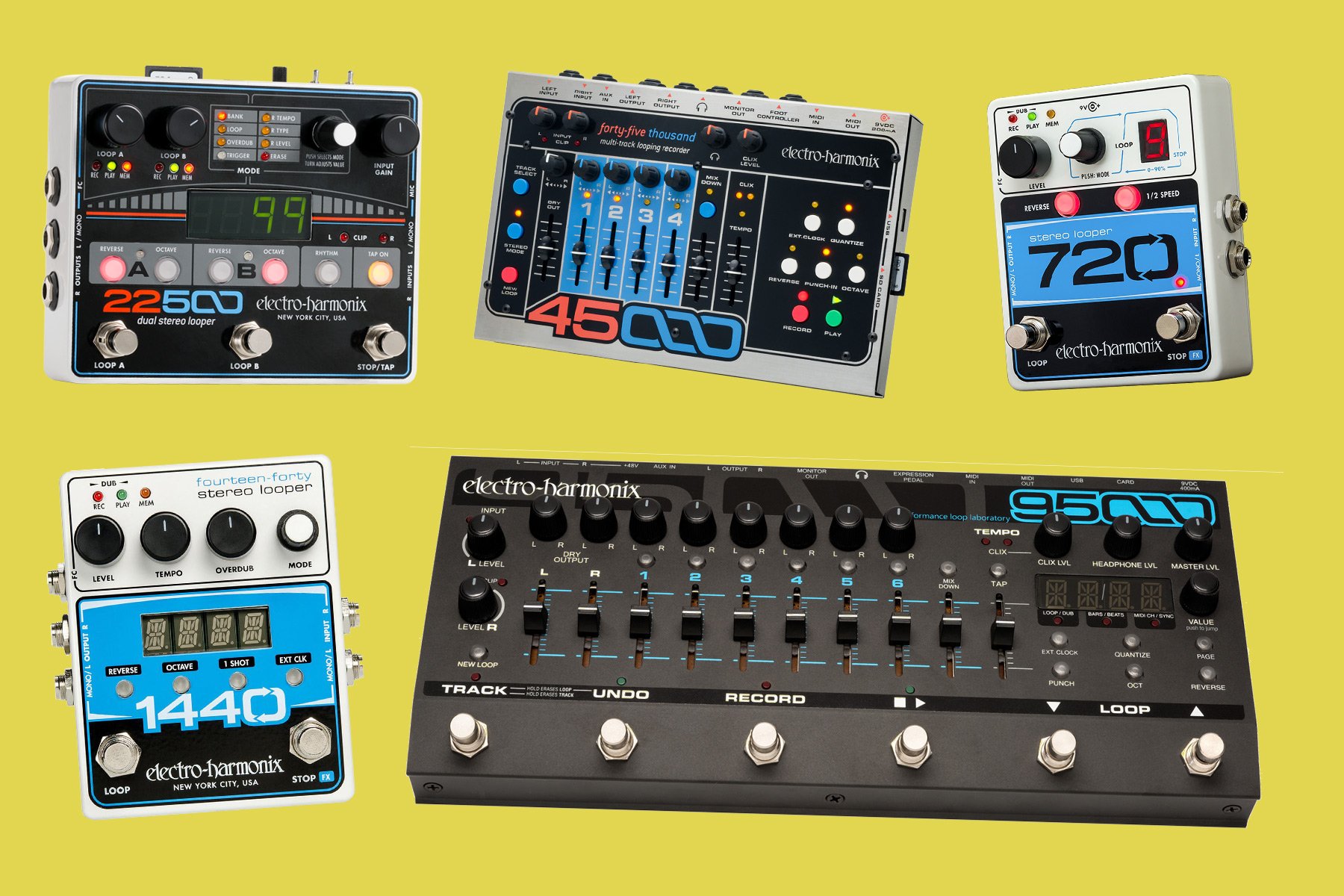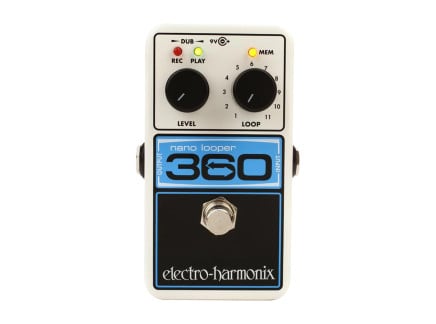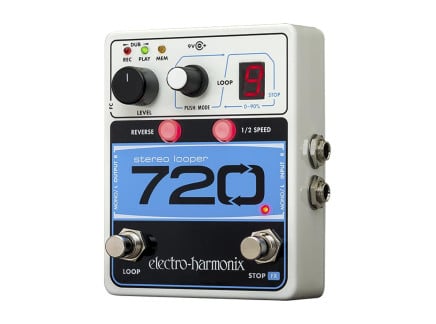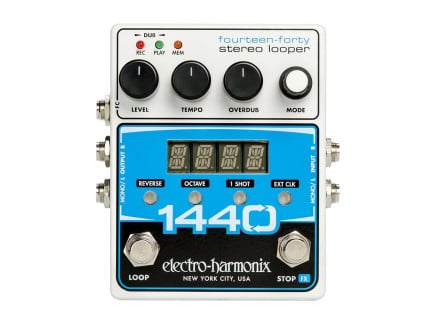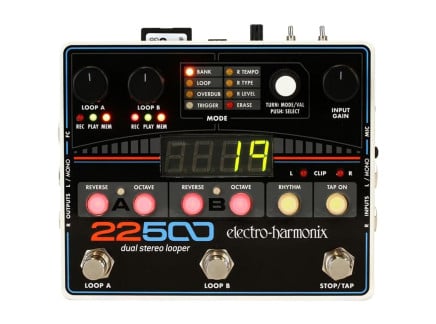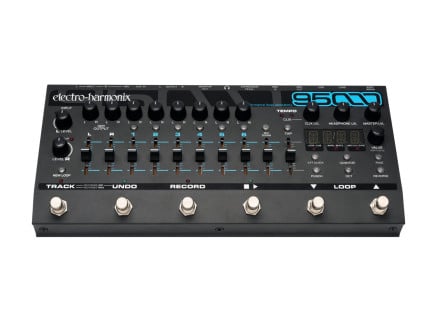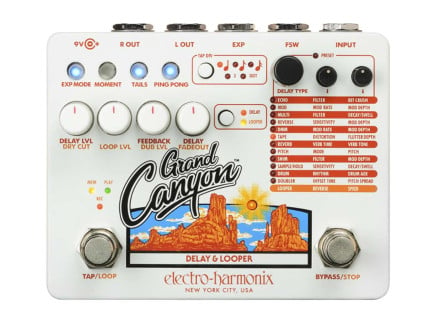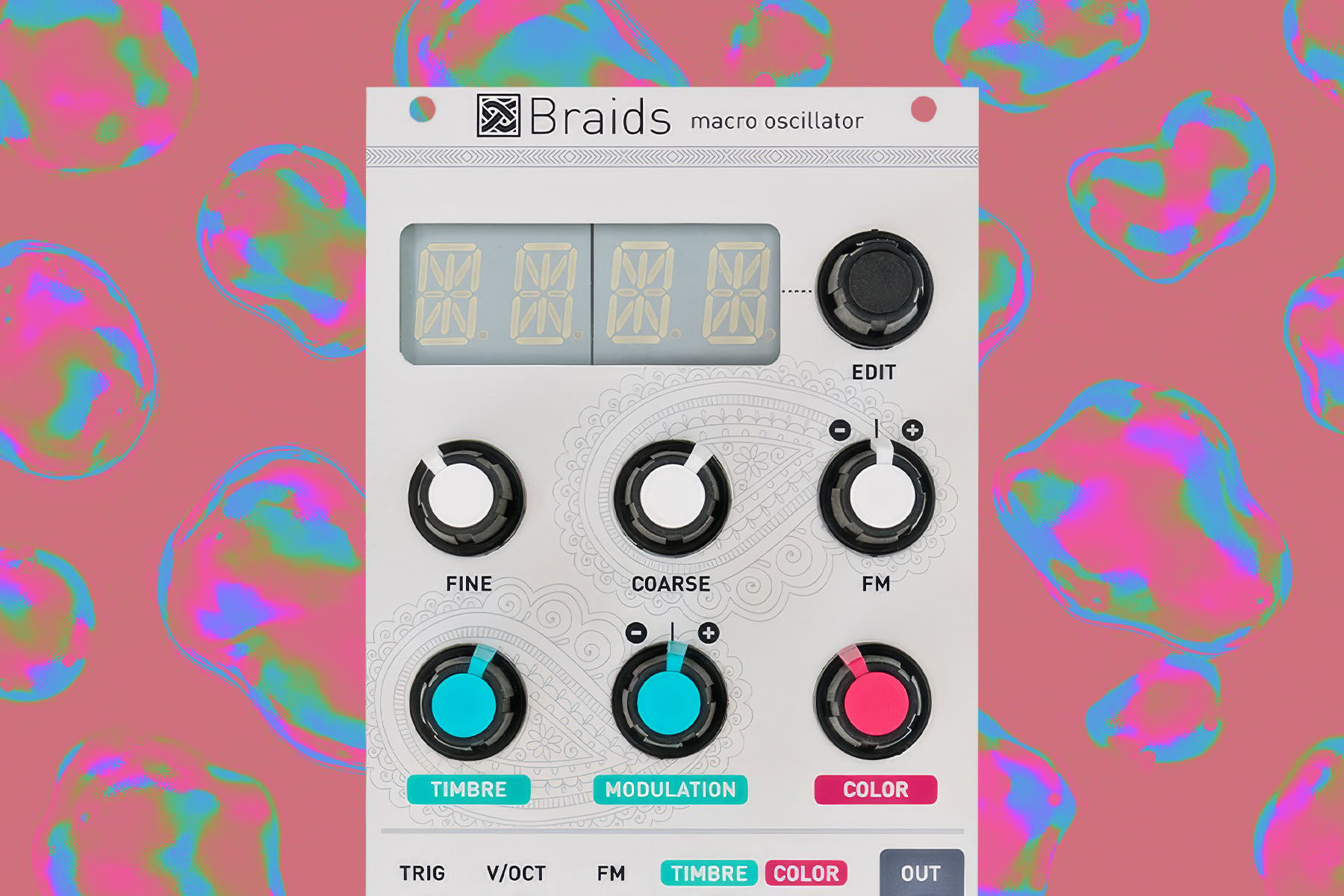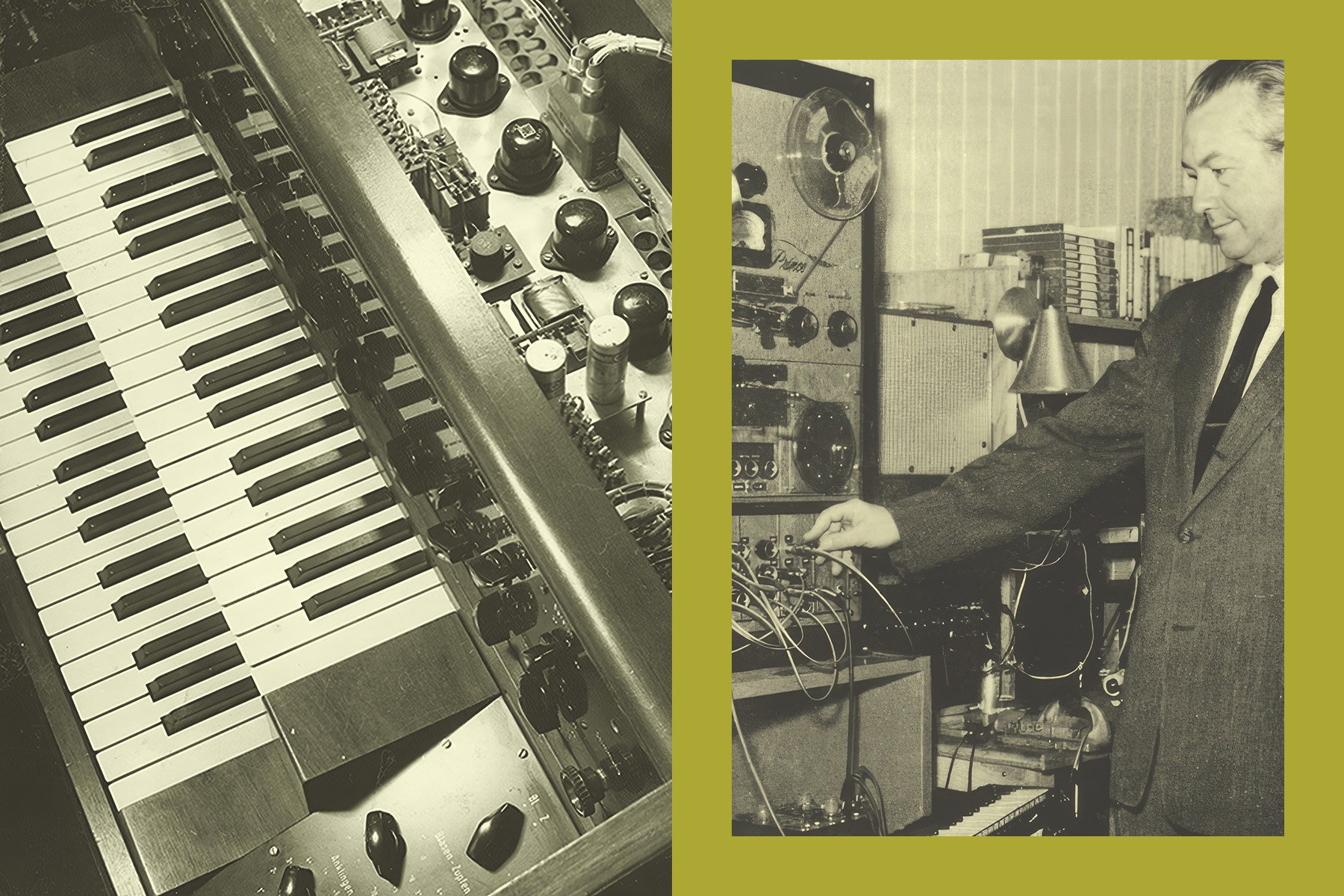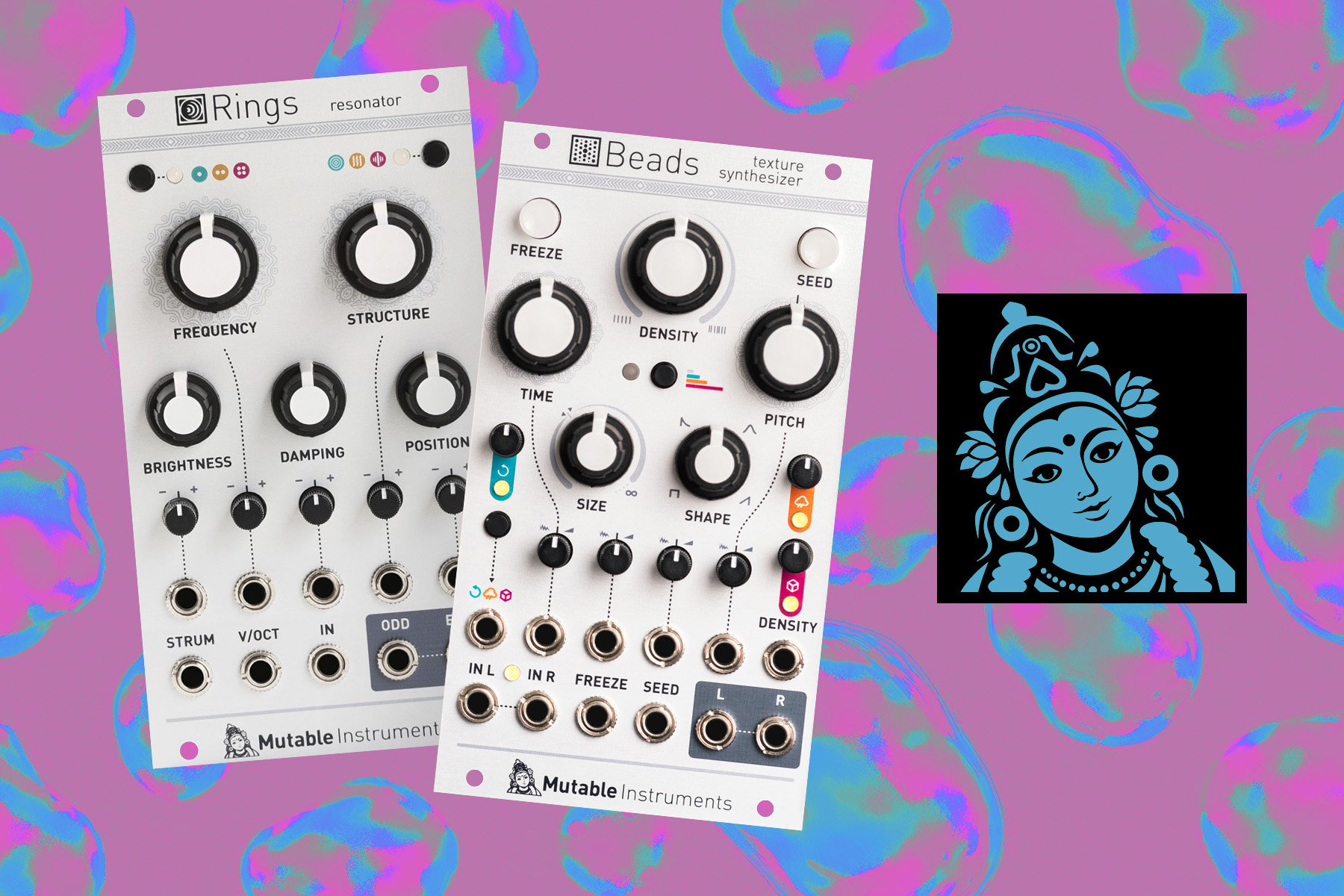In a market full of effects units that can do some insane things to audio signals, loopers are unique. They’re best known as gear for guitar players, but you’ll find them in all kinds of setups: bass rigs, vocal chains, even keyboard players use them.
Electro-Harmonix was founded on trailblazing effects, and they’re the reasons loopers have evolved to where they are today. They’ve designed a lot of them, and have one of the most respectable looper lineups in the business. Here, we run down a little history of how EHX developed the idea of the looper, different models the company has brought to market, and the differences between them.
Electro-Harmonix Makes History…Again
Few manufacturers have been able to make history in the way that EHX has. They are a company that is constantly developing innovative ideas that resonate with musicians worldwide. They pioneered the concept of the looper, a tool for “sound on sound” recording that—at the time—could only be achieved in the recording studio.
In 1981 they rolled out the first digital delay pedal with their 2 Second Delay. Through the Infinite switch, you could create a loop of anything that was played while the footswitch was held down. Two years later they released the 16 Second Digital Delay, a delay/looper hybrid that is still beloved today—and goes for insane amounts on the used market. What sets it apart from its predecessor is the ability to build loops over a specific number of beats.
This set the stage for the evolution of EHX loopers for decades to come…
Electro-Harmonix has an impressive line of looper pedals. From simple to sophisticated, here’s a rundown of what they can do, what sets them apart, and which one might be the perfect fit for your setup.
Electro-Harmonix Nano Looper 360
For players just looking for a to-the-point looper it doesn’t get more streamlined than the 360. But don’t let it’s slimmed down look fool you. There’s some serious heat under the hood.
It has 360 seconds—or six minutes—of 24-bit, 44.1kHz recording to let you loop and layer sounds. You can save them to the 11 memory banks for instant recall. No more having to loop in the moment, unless you want to!
With unlimited overdubs you can make your loops as complex as you want. Everything is controlled through a single, noiseless footswitch. Two control knobs set the output volume level and preset bank.
Simple to use doesn’t mean simple sounds with the 360.
Electro-Harmonix 720 Stereo Looper
Taking things up a notch is the 720. It adds twice as much roll time as the 360, 720 seconds or 12 minutes total, and adds stereo I/O. The recall bank accommodates up to 10 loops, but the magic is what you can do with them. Vari-speed them to half tempo, take them down an octave, even play them in reverse.
When you’re looping live the part has to be played just right. So if you create a layer you don’t like, the Undo function lets you delete it easily. Changed your mind? Then just use Redo!
It still uses 24-bit, 44.1kHz conversion but offers some features its little brother doesn’t. External control is possible, and it supports footswitches with up to three buttons. It also has a loop fadeout mode so you can give a clean blend to each layer.
Electro-Harmonix 1440 Stereo Looper
Bumping up the looping time even more is the 1440. Starting to notice a pattern here? With 1,440 seconds—24 minutes, to be clear—you pretty much don’t have to worry about a time cap anymore.
The bit depth and sample rate of the recording specs are the same, but it introduces and improves on a lot of features. It can save 20 loops with instant recall. Playback is still vari-speed, but this model can sync to an external MIDI clock.
Overdubs are unlimited, so it should be easy to fill up all that recording space. One-shot mode lets you trigger single loops. And it gets better.
You’re not stuck with loops you have to record to the 1440 either. Through the app you can import your own samples. Any sound you can think of is fair game. Import drums, samples, vocals and create entire productions right from the pedal!
Electro-Harmonix 22500 Dual Stereo Looper
Electro-Harmonix keeps one-upping themselves. The 22500 isn’t just a looper, it’s a full-fledged multitrack workstation. It all starts with a dual stereo looping design with sequential looping, which is effectively a way to arrange songs.
With this much looping available things can get out of hand quickly, so lengths can either be independently free form or locked. Undo and redo functions help you create quickly and efficiently, and loops can be quantized to tempos with the onboard tap tempo switch.
Each of the two loops can be played with reverse and octave settings. It has 100 loops in total by recording directly to an SD card and a USB port for backing up or restoring your work. And through the external foot controller you can easily cycle up or down.
But here’s where it really steps up. It has inputs for instruments and microphones, as well as phantom power for use with condenser mics! All of this in a pretty simple control set considering what it can do. Seriously next level.
Electro-Harmonix 45000 Stereo Multitrack Looper
If the 22500 opens the door to full on multitrack looping, and the 45000 knocks the walls down. It’s a full multitrack recorder and looper hybrid. Gear with these kinds of capabilities could easily be cumbersome to use, but EHX laid the controls out so you can focus on being creative instead of reading the manual.
Each loop is built on four mono tracks and a stereo track for mixing down. It stores everything to SD cards that can hold 100 loops, but you need the foot controller to access them. But it’s worth the investment and provides hands-free control over loop and track select, playback transport, and punching in and out for overdubs.
Reverse recording and playback let you get trippy with it, and it adds a control that varies the speed at any point within a two octave range. Most of the parameters can be controlled through MIDI sync too.
It has an onboard metronome, and any multitrack workstation wouldn’t be complete without one. The click routes out to a headphone or monitor output. Other types of I/O like aux input and MIDI clock sync let you integrate it into other recording setups.
One of the downsides is it only works with 16-bit/44.1kHz files, but you can upload your own .WAV or send MP3 quality files through the auxiliary input. The 45000 is designed to be used standalone, but with how easily it integrates into other types of workflows you can use it however you want.
Electro-Harmonix 95000 Performance Looper
This is the latest model, and it’s a behemoth of a looper pedal. With six tracks that mix down to stereo it houses 375 minutes of recording time.
So how do you fill up so much recording space? With an interface that gives you control over almost every way to manipulate the sound and makes you want to continue exploring. With panning for every track including the stereo bus, volume sliders, and multiple ways to manipulate each loop, what can’t it do?
As far as I/O goes it has dual combination XLR-1/4” inputs and two 1/4” outputs. It has MIDI integration, outputs for monitoring and headphones, and expression pedal and 3.5mm auxiliary input.
If looping is a serious part of your workflow or musical process and you need a floor model that doesn’t leave anything to be desired, do you have 375 minutes to spare?
Beyond Loopers
Electro-Harmonix’s dedicated loopers are great, but what if you just want a taste of it? They add looping features to some of their delay pedals too. EHX has a design ethos of making their delay pedals as versatile as possible, which includes adding looper features.
The Canyon is a delay EHX released in 2017. With 11 total sounds this pedal packs serious punch across its variety of delays. While its looper isn’t nearly as robust as the numbered series in the Electro-Harmonix lineup it does offer a maximum loop length of 62 seconds.
For musicians that just want a single loop layer in a delay pedal that can add a lot of utility in a small footprint it’s a great option.
Delay loopers come in a lot of styles. The Grand Canyon takes the grand ambitions of the Canyon and fully realizes them. The looping function is integrated and provides recording and overdubbing.
Sixteen minutes of total loop recording time is stored internally and the DSP retains it for recall. It only has one loop layer, but through the preset controls you can reverse it or speed it up.
The looping features might be limited, but if you’re a delay nerd with a stereo style you’ll find out pretty fast how the Grand Canyon earned its name.
The original Memory Man is one of the most revered delay pedals of all time. Original models offered the warm, analog delay sounds that defined some of the most important eras of music with the addition of some modulation sounds that immediately found a home in genres from new wave and punk to what’s now labeled classic rock.
This model’s looping feature is different from a lot of other delays that offer it. Only 30 seconds can be looped, but overdubs let you build creative parts in that timeline. Reverse mode lets you add backwards tape sounds.
Electro-Harmonix reimagined one of the most classic pedals in their lineup with the Stereo Memory Man. When it comes to looping it’s pretty simple, but stands up to the EHX ethos.
Conclusion
Loopers open up all kinds of creative options. A lot of artists use them live, but don’t underestimate their usefulness in the recording studio. Used as an effect, a part of the recording rig, or as a standalone recording device they inspire a workflow a little left of normal.
And when you think about using them with other effects, how they fit into your signal flow, or using more than one at different points in the chain things start to get really interesting.
No matter what kind of looper you’re looking for, Electro-Harmonix has the perfect one for you. The “sound on sound” ways they let you build arrangements would make even Les Paul proud.
Brandon Stoner is a lifelong musician and audio engineer who owns more guitars than anyone needs. As a lover of all things writing and music technology, he crafts every piece with his dog Max on his lap.

